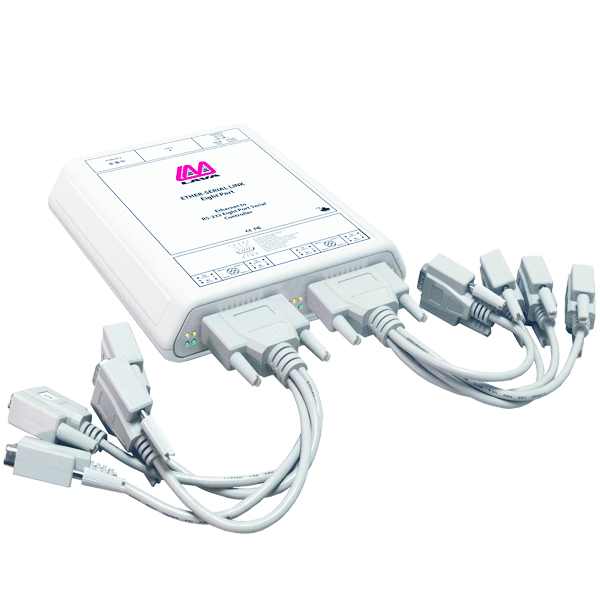LAVA Ether-Serial Links are versatile networking devices. The following tips can help you get the most from our serial device servers:
- LAVA Ether-Serial Links configure easily with one IP address assigned to the unit in the following ways:
- Using DHCP (Dynamic Host Configuration Protocol;
- Manual configuration using the LAVA Ether-Link Manager software application for Windows;
- Telnet; or
- Web browser.
- LAVA Ether-Serial Link configurations can be password protected using LAVA’s easy-to-use embedded web server. In addition to password protecting the Ether-Serial Link unit, each serial port can be password protected individually.
- Serial ports on LAVA Ether-Serial Links are seen as true native COM ports by Windows. They appear in Window’s Device Manager just like the internal COM ports in your PC. That means that ANY Windows software that communicates with a COM port (and even DOS applications running in Windows) can communicate with the COM ports of a LAVA Ether-Serial Link – even over the Internet!
- The LAVA Ether-Serial Link is easily configured for operation across a gateway and over the Internet with its intuitive WAN port configuration.
- If you have a serial-only printer and Ethernet-enabled ECRs, the ECRs can share the serial printer because the LAVA Ether-Serial Link can make that printer a network device.
- LAVA Ether-Serial Links can be assigned a “friendly name”, as well as an IP address. For networked checkouts for example, this name can be used to easily identify a checkout station with a name such as “Back door” or “Susan’s checkout counter.”
- LAVA’s unique port binding technique keeps LAVA Ether-Serial Link ports connected, even on networks with non-static IP addresses. Ether-Serial Links come in RS-232, RS-422, RS-485, and TTL configurations, with DB-9 or RJ-45 serial connectors.
- LAVA Ether-Serial Links are available with optional wall mount (DIN rail) brackets. This versatility makes warehouse setup, for instance, a breeze! Connect Simply.


